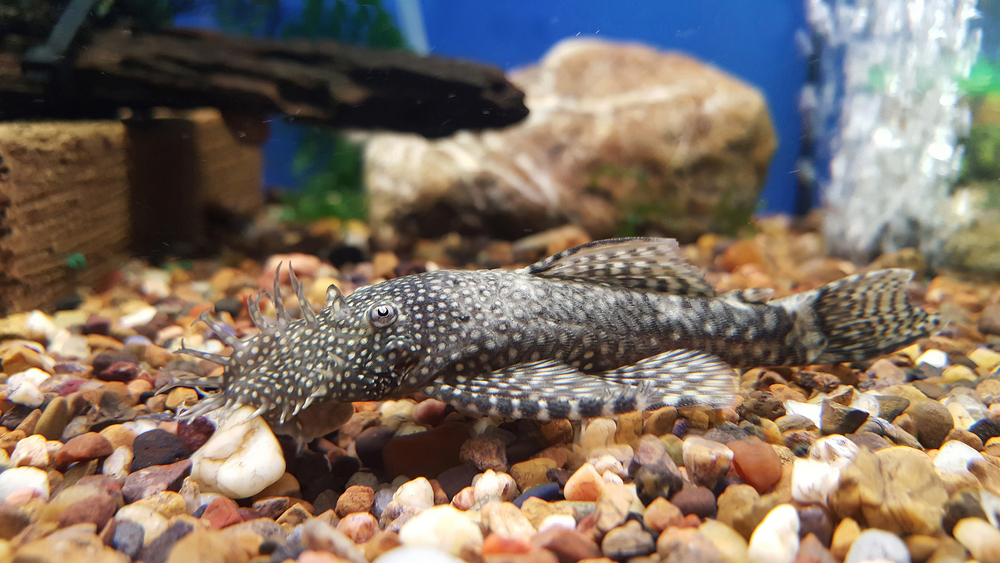Bristlenose plecos are a popular freshwater fish that are often kept as pets. These fish are known for their distinctive appearance, with their bristly whiskers and small size. One of the most common questions that people have about these fish is how long do bristlenose plecos live?
The lifespan of a bristlenose pleco can vary depending on a number of factors, including the quality of care that they receive and their environment.
On average, these fish can live for around 5-8 years in captivity, but some have been known to live for up to 12 years or more.
Understanding the factors that can impact the lifespan of these fish can help pet owners provide the best possible care for their aquatic companions.
Contents
Key Takeaways on How Long Do Bristlenose Plecos Live
- Bristlenose plecos are a popular freshwater fish known for their distinctive appearance.
- The lifespan of a bristlenose pleco can vary depending on a number of factors, including the quality of care and environment.
- On average, these fish can live for around 5-8 years in captivity, but some have been known to live for up to 12 years or more.
Don’t miss out on these other top posts in this category:
Bristlenose Plecos Overview
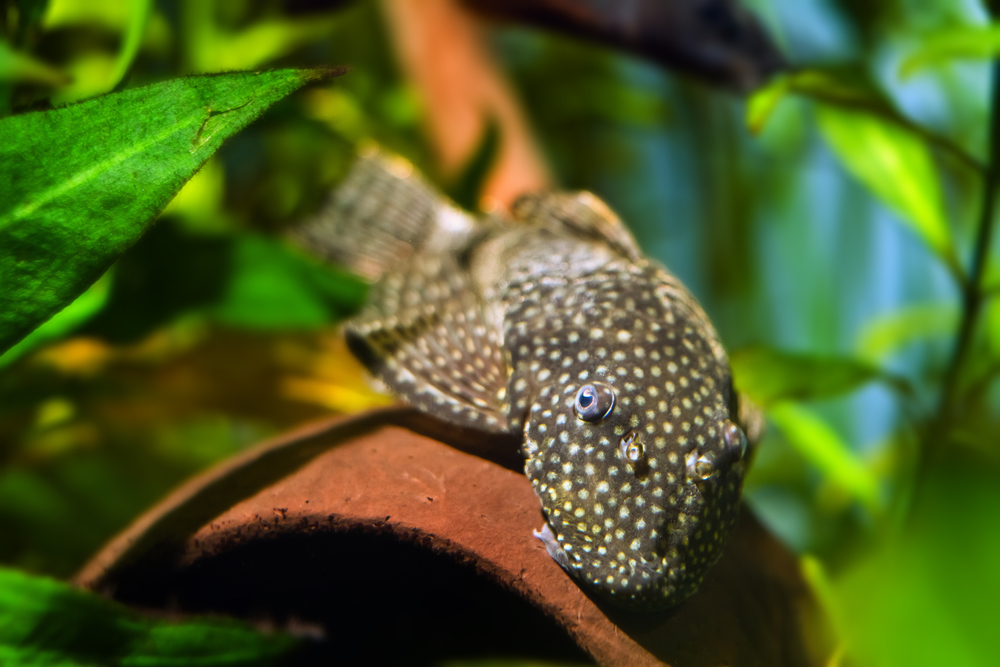
Bristlenose plecos, also known as bushy nose plecos or ancistrus cirrhosus, are a popular species of catfish in the loricariidae family. They are native to South America and are commonly found in the Amazon River basin.
These fish are known for their distinctive appearance, which includes a flattened body, a wide head, and a mouth that is adapted for scraping algae off of surfaces.
They have a brownish-gray coloration and are covered in small, hair-like projections that give them their “bushy” appearance.
Bristlenose plecos are relatively small fish, typically growing to be around 4-6 inches in length. They are hardy and easy to care for, which makes them a popular choice for both beginner and experienced fish keepers.
In terms of lifespan, bristlenose plecos can live for up to 5-6 years in captivity if they are properly cared for. This includes providing them with a suitable tank environment, a balanced diet, and regular water changes.
Lifespan of Bristlenose Plecos
Bristlenose plecos are hardy fish that can live for many years if they are properly cared for. In the wild, they typically live for 5 to 7 years, but in captivity, they can live for up to 12 years or more.
The lifespan of a bristlenose pleco can be affected by several factors, including water quality, diet, and genetics. They are hardy fish that can tolerate a wide range of water conditions, but they do best in water that is clean and well-oxygenated.
Regular water changes and the use of a good filtration system can help to ensure that the water quality remains high.
Bristlenose plecos are omnivores and will eat a variety of foods, including algae, vegetables, and meaty foods. A balanced diet that includes a variety of foods will help to ensure that they receive all of the nutrients they need to stay healthy.
In general, bristlenose plecos are hardy fish that are relatively easy to care for. With proper care, they can live for many years and provide their owners with years of enjoyment.
Physical Characteristics
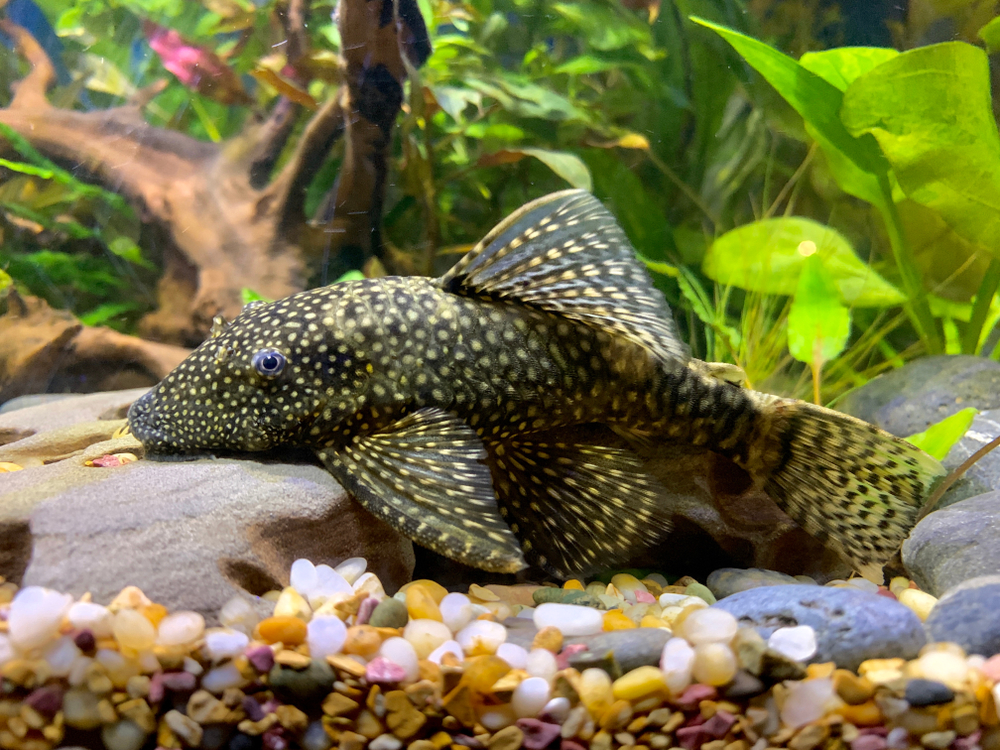
General Appearance
Bristlenose plecos are small, freshwater fish that typically grow to be around 4-6 inches in length. They have a flattened, oval-shaped body and a wide, fan-shaped tail.
Their body is covered in bony plates, giving them a rough, armored appearance. They have a large head and a wide mouth, which they use to scrape algae and other food sources off of rocks and other surfaces.
Bristlenose plecos come in a variety of colors and patterns, including brown, black, gray, and albino. They also have distinctive bristles on their faces, which are more prominent in males than females. These bristles are used to attract mates and establish territory.
Male Vs Female
Male bristlenose plecos are typically larger and more colorful than females. They also have more prominent bristles on their faces, which are used to attract mates and establish territory.
Females, on the other hand, have shorter, less prominent bristles and tend to be smaller and less colorful.
One way to tell the difference between male and female bristlenose plecos is to look at the shape of their genital papilla. In males, the genital papilla is longer and more pointed, while in females it is shorter and rounder.
Habitat and Tank Requirements

Natural Habitat
Bristlenose plecos are native to the Amazon River basin in South America. They are found in slow-moving rivers and streams with sandy or rocky bottoms.
These fish prefer areas with plenty of hiding places, such as submerged logs, rocks, and vegetation. They are known to spend most of their time hiding in these structures, only coming out to feed.
Aquarium Conditions
To keep bristlenose plecos healthy and happy in captivity, it is important to replicate their natural habitat as closely as possible.
This means providing them with a tank that is large enough for them to swim and hide in comfortably. A good rule of thumb is to have at least 20 gallons of water per fish.
In addition to a large tank, it is important to maintain proper water conditions. Bristlenose plecos prefer water that is slightly acidic with a pH range of 6.5-7.5.
They also require a water temperature between 72-82°F. It is important to keep the water quality high by performing regular water changes and using a good quality filter.
Bristlenose plecos are not picky eaters and will accept a variety of foods, including algae wafers, vegetables, and live or frozen foods. It is important to provide them with hiding places and decorations, such as rocks and driftwood, to make them feel secure.
Diet and Feeding
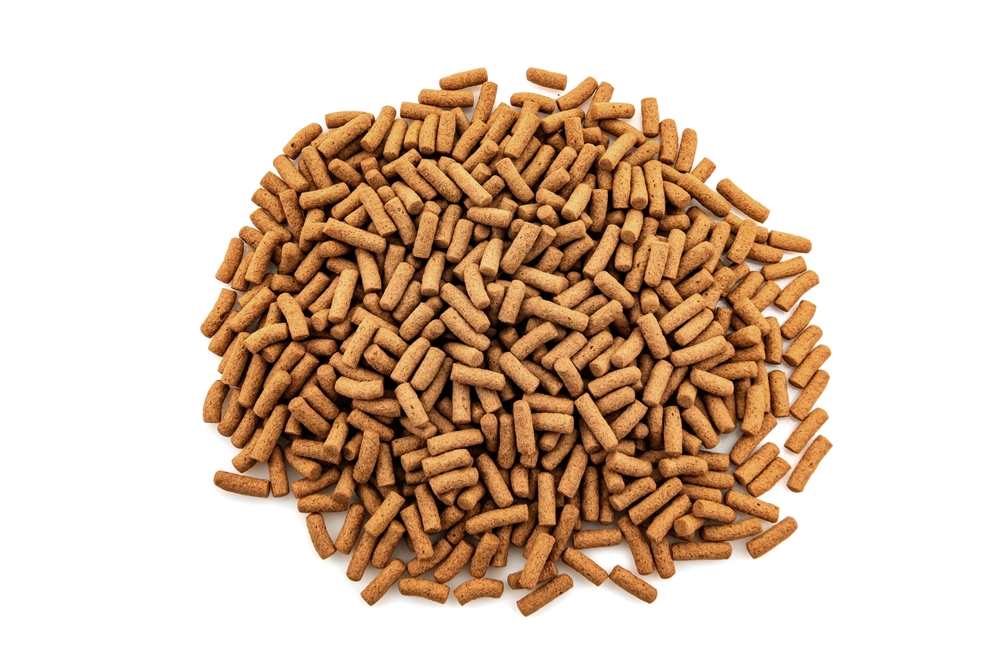
Dietary Needs
Bristlenose plecos are herbivorous fish that require a balanced diet to maintain their health. Their diet should consist of a variety of foods, including vegetables, algae, and plant matter.
It is also recommended to include protein-rich foods, such as bloodworms, to supplement their nutritional needs.
Driftwood is an essential part of their diet as it helps with digestion and provides them with essential nutrients. It is also recommended to include spirulina wafers in their diet as it is an excellent source of protein.
Feeding Schedule
Bristlenose plecos should be fed once or twice a day, depending on their age and size. Younger plecos should be fed more frequently than adults. It is recommended to feed them at the same time every day to establish a feeding routine.
It is best to feed them small portions of food at a time to prevent overfeeding and ensure they consume all the food. It is also recommended to blanch vegetables before feeding them to the plecos to make it easier for them to digest.
Bristlenose plecos are omnivorous and will consume algae wafers and other plant-based foods. However, it is essential to ensure they are receiving a balanced diet and not relying solely on one type of food.
Behavior and Temperament
Bristlenose plecos are generally peaceful fish that can coexist with other non-aggressive fish species. They are not territorial and do not require a large aquarium to thrive.
However, it is important to note that they can become aggressive towards other plecos if they feel threatened or if their territory is invaded.
These fish are also known to be active and curious, often exploring their surroundings and interacting with objects in their environment.
They are primarily nocturnal and will spend most of their day hiding in caves or under rocks. It is important to provide plenty of hiding places for them to feel secure.
Bristlenose plecos are also popular for their algae-eating abilities. They are efficient at consuming algae and can help keep the aquarium clean. However, it is important to note that they still require a balanced diet that includes algae wafers, vegetables, and protein-rich foods.
Bristlenose Plecos Breeding
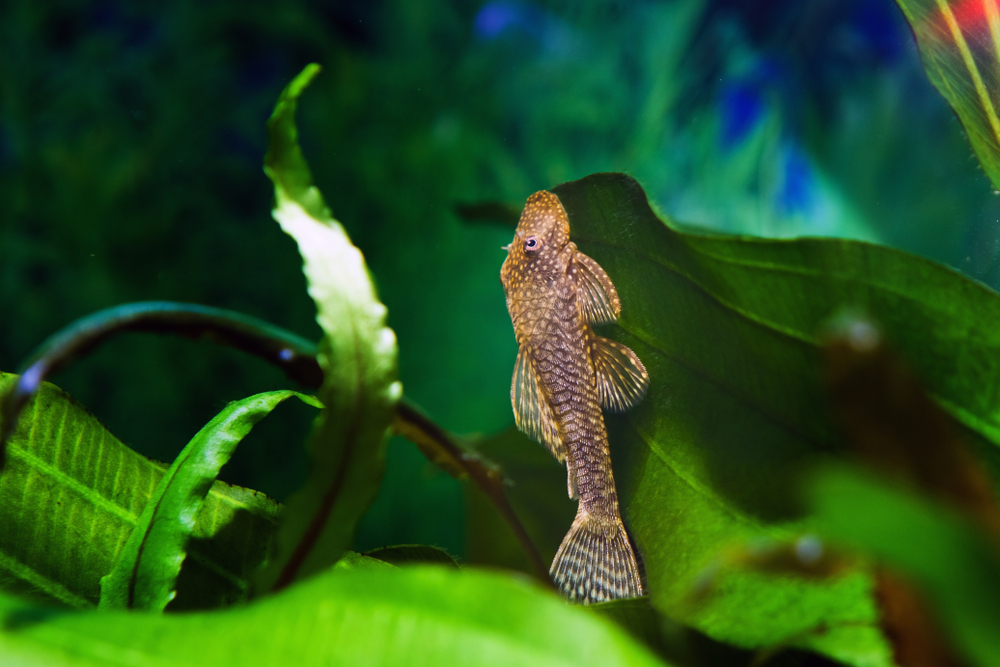
Bristlenose Plecos are known to be a relatively easy fish to breed in captivity. They are known to breed readily in the right conditions and can produce many fry at once. In this section, we will discuss the breeding process of Bristlenose Plecos, including the eggs and fry.
When it comes to breeding Bristlenose Plecos, it is important to have a male and female pair in the same tank. The male will usually chase the female around the tank and try to entice her to lay eggs.
Once the female is ready, she will lay her eggs on a flat surface such as a rock or the side of the tank.
After the eggs have been laid, the male will fertilize them. The eggs will then hatch in about 4 to 7 days, depending on the temperature of the water. The fry will then attach themselves to the surface where the eggs were laid and will stay there until they are able to swim on their own.
During this time, it is important to make sure that the fry have enough food. They can be fed a variety of foods such as crushed flakes, baby brine shrimp, or finely chopped vegetables. It is also important to keep the tank clean and well-maintained to ensure the health of the fry.
Common Diseases and Their Treatment
Bristlenose plecos are generally hardy fish and not prone to many diseases. However, they can still fall victim to some common ailments that can be easily treated if caught early.
Ich
Ich, also known as white spot disease, is a parasitic infection that causes white spots to appear on the fish’s body. It can be caused by stress, poor water quality, or a weakened immune system.
To treat ich, it is important to first isolate the infected fish and raise the water temperature to 86°F for several days. Medications such as malachite green or copper sulfate can also be used to treat the infection.
Dropsy
Dropsy is a bacterial infection that causes the fish to develop a swollen abdomen and pinecone-like scales. It is often caused by poor water quality or a weakened immune system.
To treat dropsy, it is important to first isolate the infected fish and improve the water quality. Antibiotics such as erythromycin or tetracycline can also be used to treat the infection.
White Spots
White spots on the fins or body of the fish can indicate a fungal infection. This is often caused by poor water quality or injury to the fish.
To treat a fungal infection, it is important to first isolate the infected fish and improve the water quality. Medications such as methylene blue or malachite green can also be used to treat the infection.
Treatment
It is important to catch and treat any diseases or infections early to prevent them from spreading to other fish in the tank.
Quarantining infected fish and improving water quality are crucial steps in treating and preventing diseases. Medications should only be used as a last resort and should be used according to the instructions on the package.
Tank Mates for Bristlenose Plecos
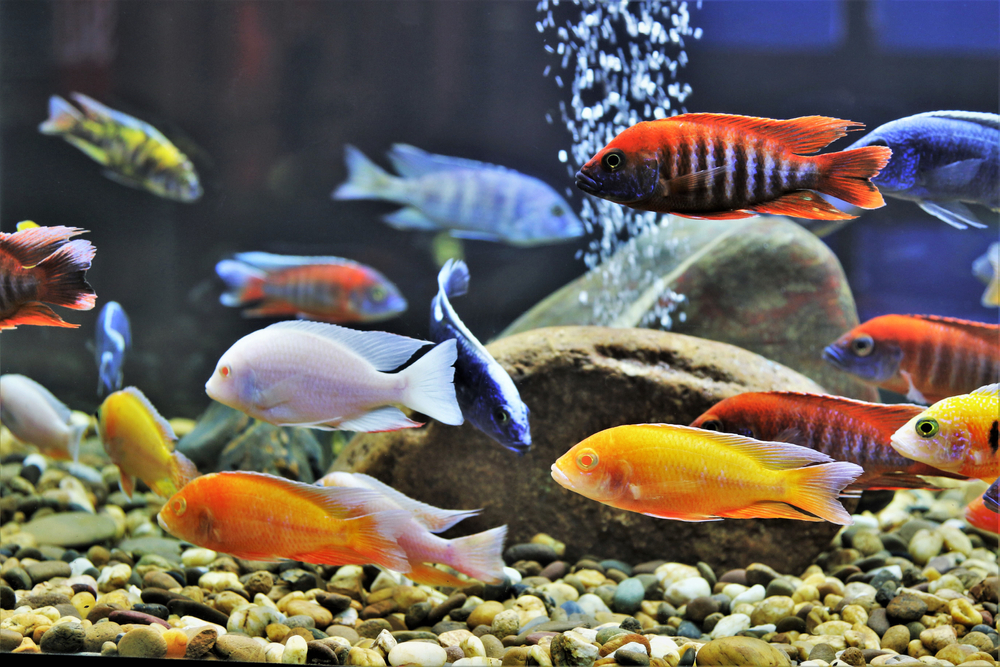
Bristlenose plecos are peaceful fish that make great additions to community tanks. However, it is important to choose tank mates that will not harm or stress them out.
When selecting tank mates for bristlenose plecos, it is important to consider their size and temperament. They are relatively small fish that grow to be around 4-5 inches in length, so it is best to avoid large, aggressive fish that may see them as prey.
Good tank mates for bristlenose plecos include other peaceful fish such as tetras, guppies, and rasboras. They also get along well with other catfish such as Corydoras and Otocinclus.
It is important to note that bristlenose plecos can be territorial, especially during breeding season. To avoid conflicts, it is best to provide plenty of hiding spots and territories for each fish.
Overall, when selecting tank mates for bristlenose plecos, it is important to choose peaceful fish that are compatible with their temperament and size. Providing plenty of hiding spots and territories can also help prevent conflicts in the tank.
Different Types of Bristlenose Plecos
Bristlenose plecos are a popular freshwater aquarium fish that are known for their hardiness and unique appearance. There are several different types of bristlenose plecos that are commonly available in the aquarium trade.
1. Bristlenose Pleco
The bristlenose pleco, also known as the bushynose pleco, is the most common type of bristlenose pleco.
They are typically brown or black in color with a mottled pattern and have a distinctive, bristly appearance. Bristlenose plecos are known for their ability to keep aquariums clean by eating algae and other debris.
2. Albino Bristlenose Pleco
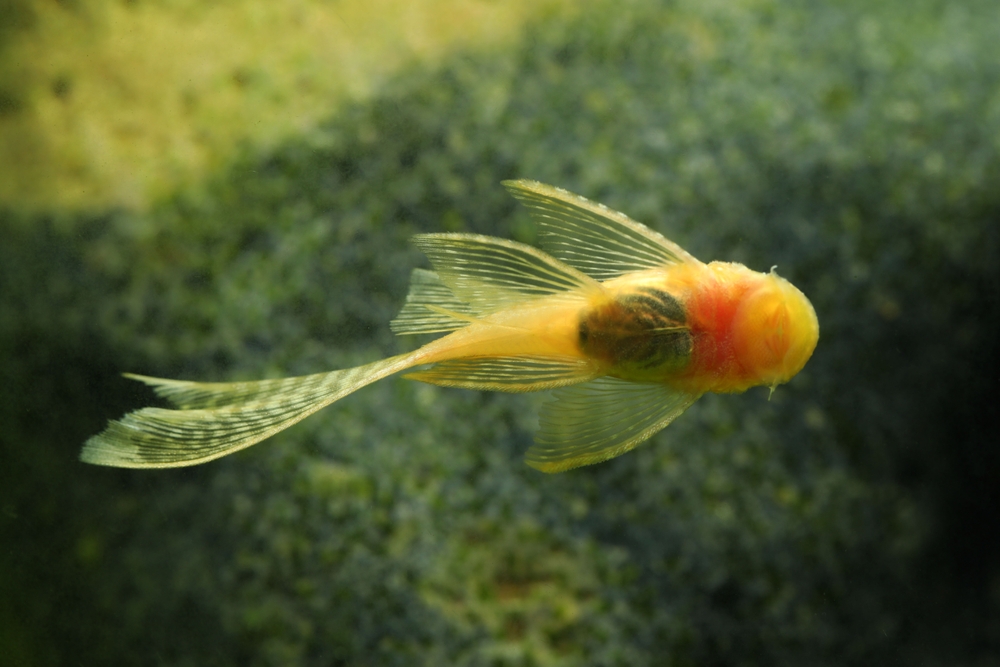
The albino bristlenose pleco is a variety of the bristlenose pleco that has been selectively bred for its white or yellow coloration. They have the same bristly appearance as the regular bristlenose pleco and are also excellent algae eaters.
3. Starlight Bristlenose Pleco
The starlight bristlenose pleco is a newer variety of the bristlenose pleco that has become increasingly popular in recent years.
They have a unique, star-shaped pattern on their body and are typically brown or black in color. Like other bristlenose plecos, they are excellent algae eaters.
4. Calico Bristlenose Pleco
The calico bristlenose pleco is a colorful variety of the bristlenose pleco that has been selectively bred for its orange, black, and white coloration. They have the same bristly appearance as the regular bristlenose pleco and are also excellent algae eaters.
5. Super Red Bristlenose Pleco
The super red bristlenose pleco is a variety of the bristlenose pleco that has been selectively bred for its bright red coloration. They have the same bristly appearance as the regular bristlenose pleco and are also excellent algae eaters.
6. Common Pleco
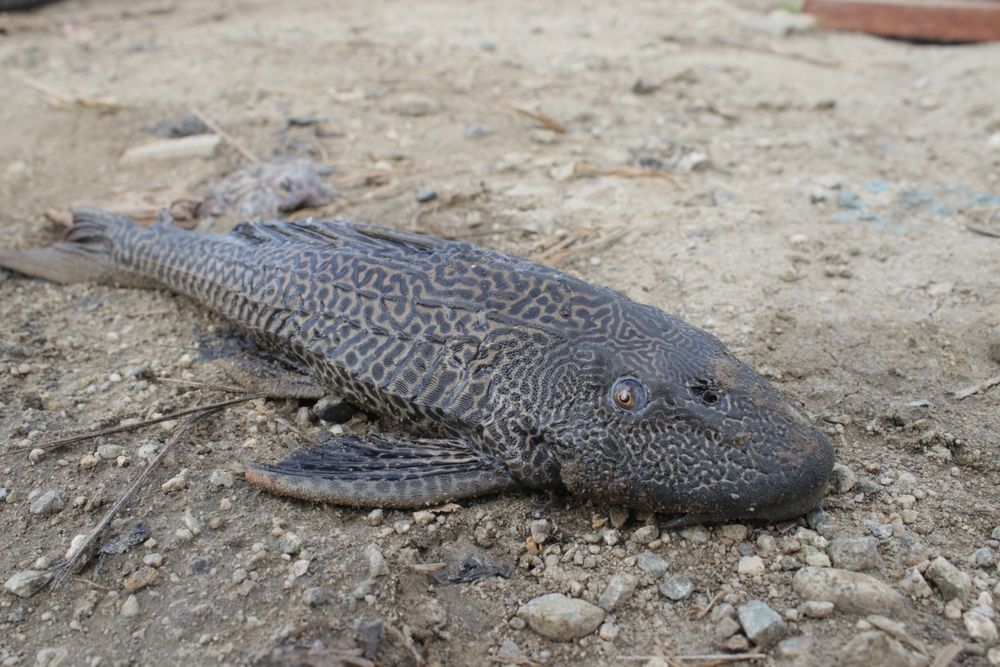
The common pleco, also known as the sailfin pleco, is a larger species of pleco that can grow up to 2 feet in length.
They are typically brown or black in color with a mottled pattern and have a more elongated body shape than bristlenose plecos. Common plecos are also excellent algae eaters but require a larger aquarium than bristlenose plecos.
7. Clown Pleco
The clown pleco is a smaller species of pleco that is typically only 3-4 inches in length. They have a distinctive black and white striped pattern and are excellent algae eaters. Clown plecos are a good choice for smaller aquariums.
8. Longfin Bristlenose Pleco
The longfin bristlenose pleco is a variety of the bristlenose pleco that has longer, flowing fins. They have the same bristly appearance as the regular bristlenose pleco and are also excellent algae eaters.
Longfin bristlenose plecos are a popular choice for aquarists looking for a unique and eye-catching fish.
Caring for Bristlenose Plecos
Bristlenose plecos are hardy and easy to care for fish, making them a popular choice among aquarium hobbyists. However, like all fish, they require proper care and maintenance to thrive in their environment.
One important aspect of caring for bristlenose plecos is ensuring that their tank is clean and well-maintained. Bristlenose plecos are cleaner fish, which means they help keep the tank clean by eating algae and other debris.
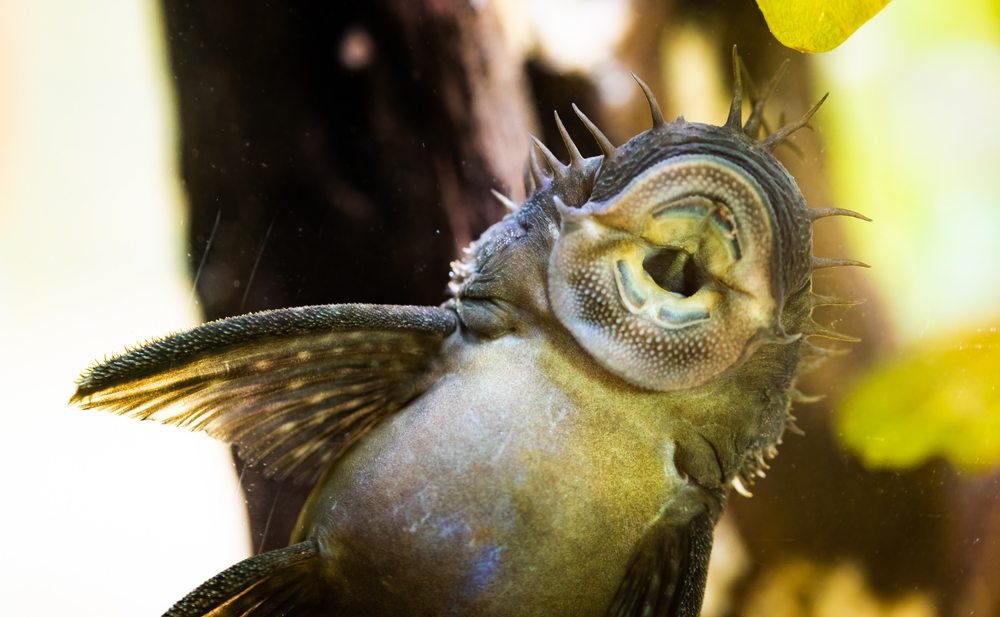
However, they also produce waste, which can lead to an increase in ammonia, nitrate, and nitrite levels in the tank. Regular water changes and keeping the tank clean can help prevent these levels from becoming too high, which can be harmful to the fish.
In addition to keeping the tank clean, it’s important to monitor the pH levels of the water. Bristlenose plecos prefer slightly acidic water with a pH between 6.5 and 7.5. Keeping the pH within this range can help ensure that the fish remain healthy and happy.
Another important factor to consider when caring for bristlenose plecos is their bioload. Bristlenose plecos are relatively small fish, but they still produce waste and require a certain amount of space to swim and move around.
It’s important to provide them with a tank that is large enough to accommodate their needs and to avoid overstocking the tank.
Some tips for caring for bristlenose plecos include providing them with plenty of hiding places, such as caves and plants, and feeding them a varied diet that includes algae wafers, vegetables, and live or frozen foods.
Conclusion
Bristlenose Plecos are a hardy and long-lived species of fish that are popular among aquarists. They have a lifespan of up to 5-6 years in captivity, although some have been known to live up to 10 years or more.
It is important to note that the lifespan of Bristlenose Plecos can be influenced by several factors, including water quality, diet, and genetics.
Aquarists should ensure that they provide their fish with a healthy and varied diet, as well as a clean and well-maintained aquarium environment.
Frequently Asked Questions
What is the average lifespan of Bristlenose Plecos?
The average lifespan of Bristlenose Plecos is between 5 to 8 years in captivity. However, with proper care and a healthy environment, they can live up to 10 years or more.
What factors can affect the lifespan of Bristlenose Plecos?
Several factors can affect the lifespan of Bristlenose Plecos, including water quality, diet, tank size, temperature, and the presence of other fish in the tank. Poor water quality, inadequate diet, and overcrowding can lead to stress, disease, and a shorter lifespan.
What is the maximum age Bristlenose Plecos can live up to?
The maximum age that Bristlenose Plecos can live up to is around 15 years in captivity. However, this is rare and requires optimal conditions, including a healthy diet, clean water, and a spacious tank.
How can you ensure a long and healthy life for your Bristlenose Plecos?
To ensure a long and healthy life for your Bristlenose Plecos, you should provide them with a suitable environment, including a spacious tank with hiding places, clean water, and a varied and nutritious diet.
Regular water changes, monitoring water parameters, and avoiding overcrowding can also help.
What are some signs that indicate a Bristlenose Pleco may be nearing the end of its life?
Some signs that indicate a Bristlenose Pleco may be nearing the end of its life include lethargy, loss of appetite, weight loss, and abnormal behavior. If you notice any of these signs, it is essential to seek veterinary attention promptly.
What are some common misconceptions about the lifespan of Bristlenose Plecos?
One common misconception about the lifespan of Bristlenose Plecos is that they can live in small tanks or bowls. In reality, they require a spacious tank to thrive. Another misconception is that they can survive on algae alone, but they need a varied and nutritious diet to stay healthy.

Ian Sterling, founder of Fishlab.com, began his aquarium journey over 30 years ago, driven by a deep fascination for fish and their diverse personalities. His website, Fishlab.com, is dedicated to making fishkeeping accessible and enjoyable, offering beginner-friendly guidance, expert insights, and a community for aquarists to connect and share experiences.


